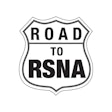Monday, December 1 | 2:00 p.m.-2:10 p.m. | M6-SSCA04-4 | Room E352
Gadopiclenol performs comparably to gadobenate dimeglumine at a lower gadolinium dose for cardiac MRI/MR angiography (MRA), researchers have found.
In this Monday afternoon session, presenter Roshun Sankaran, MD, of the University of California, San Diego School of Medicine, will outline results from a study that found "no significant differences in signal to noise ratio or flow measurement error between gadopiclenol at three different doses and gadobenate dimeglumine" -- which could translate to a lower gadolinium dose for patients.
Gadopiclenol is an extracellular macrocyclic gadolinium-based contrast agent, and its high T1 relaxivity can reduce the amount of total gadolinium administered -- a reduction particularly important for patients with adult congenital heart disease who undergo regular, lifelong MRI surveillance. But gadopiclenol's image quality on MR angiography and 4D Flow compared with gadobenate dimeglumine has been unclear.
The team conducted a study that included 40 patients who underwent MRA with four different measures and types of contrast:
- 12 received 0.15 mmol/kg gadobenate dimeglumine
- 10 received 0.075 mmol/kg gadopiclenol
- 11 received 0.1 mmol/kg gadopiclenol
- Seven received 0.15 mmol/kg gadopiclenol
Overall, Sankaran and colleagues reported no significant differences between these groups in median signal-to-noise ratio in the aorta, main pulmonary artery, or ventricular septal myocardium.
Check out this session to learn more about the group's findings and how they could improve patient care.



